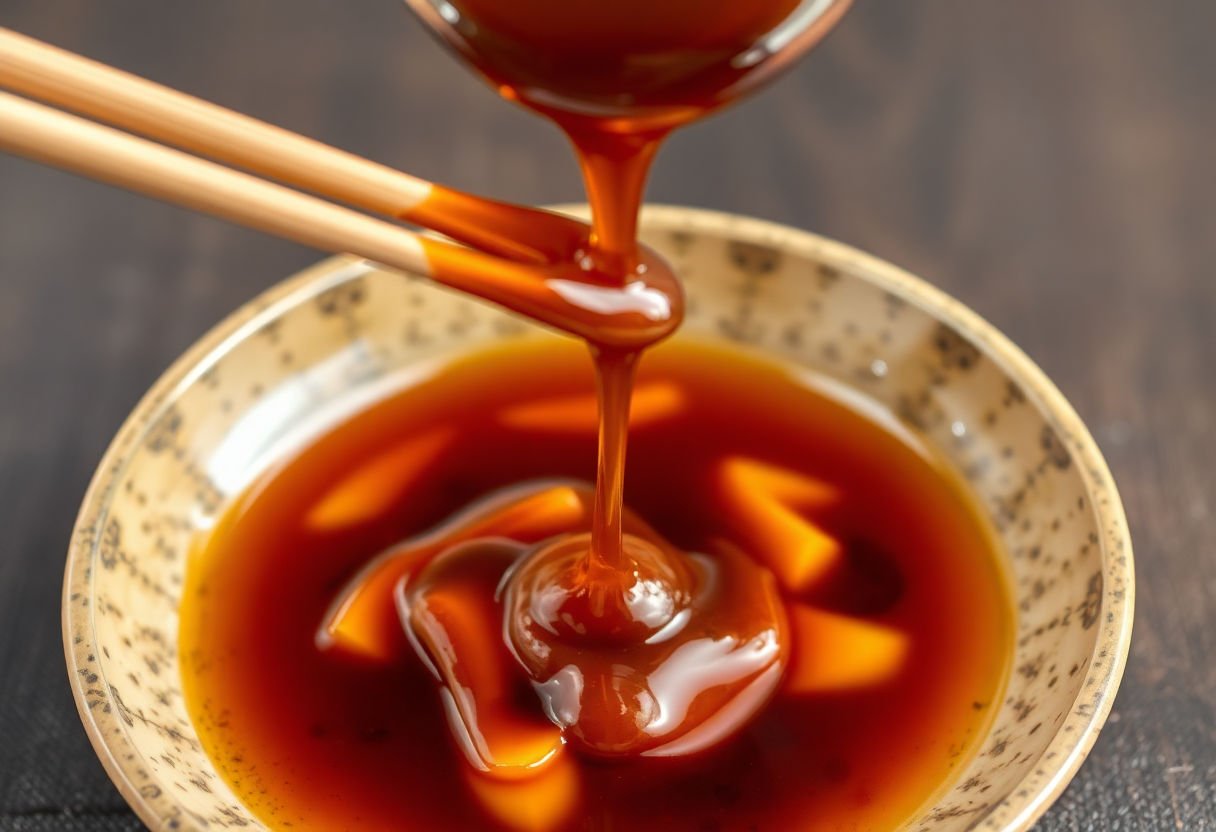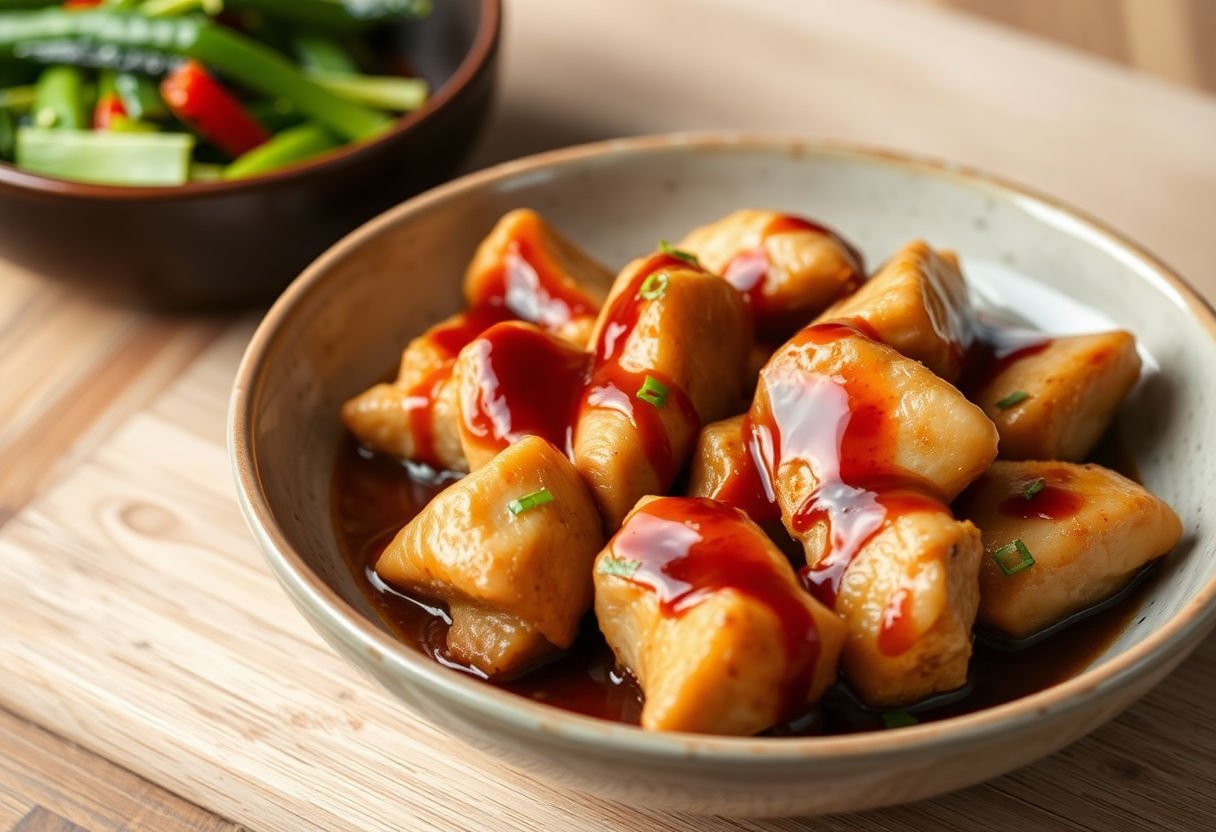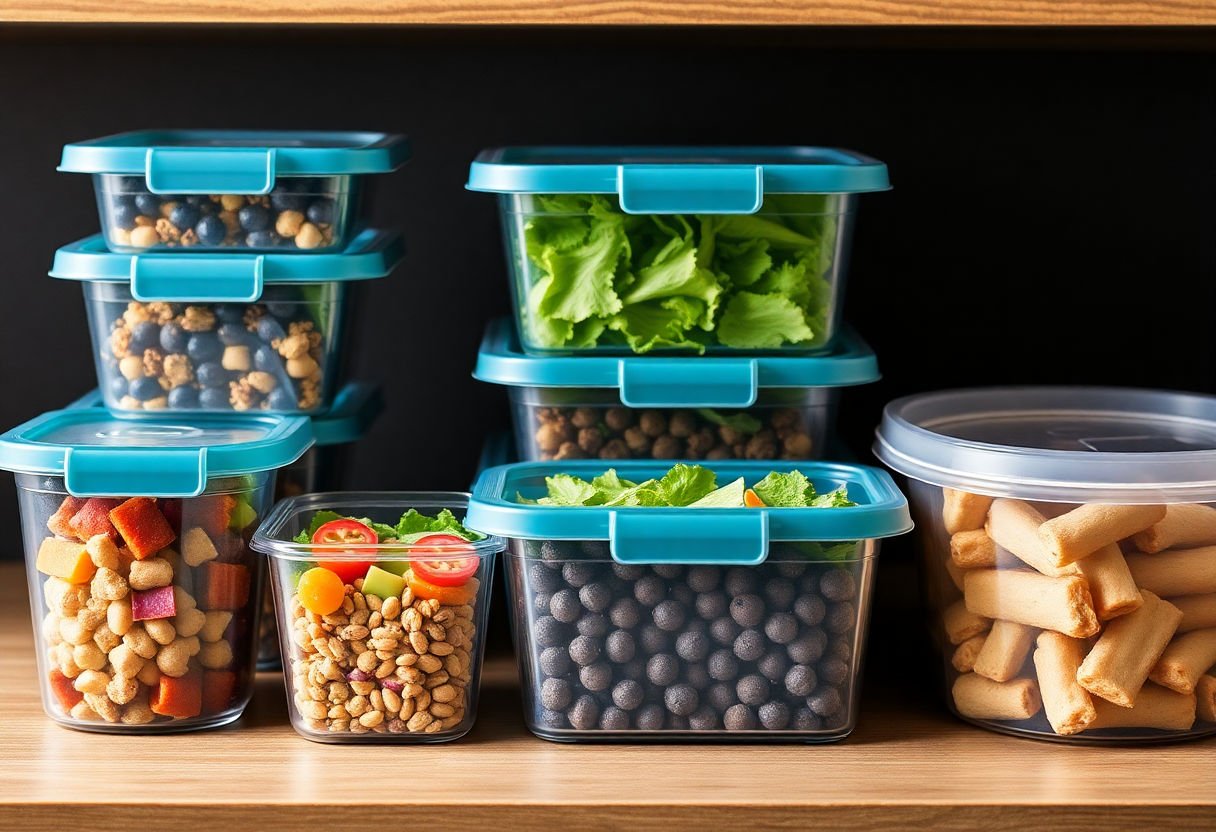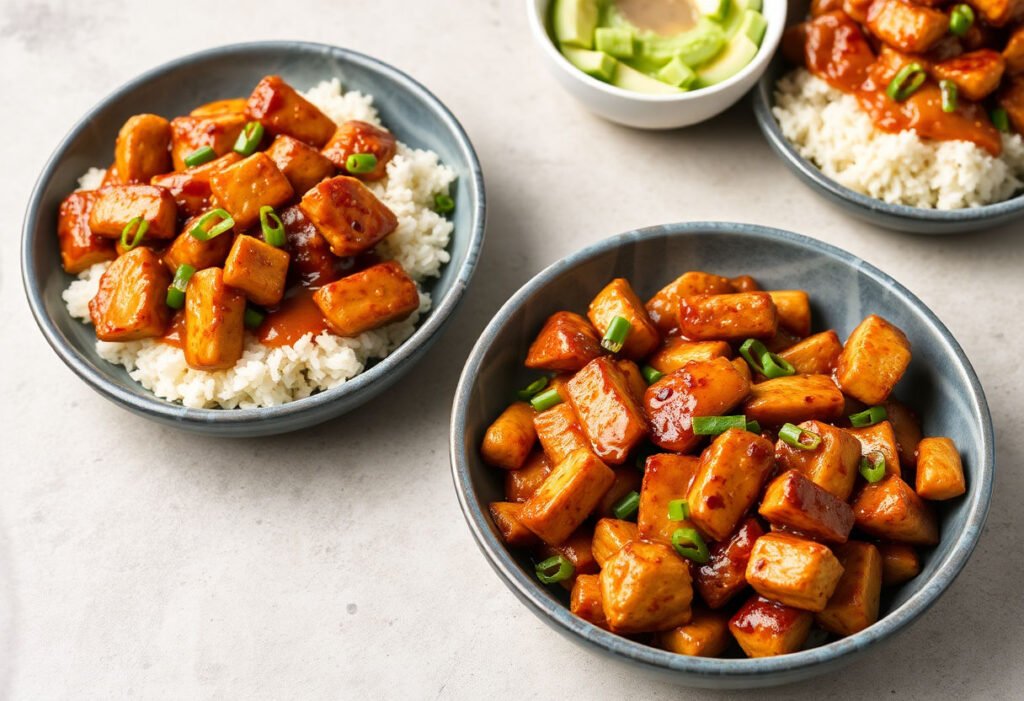Unlock the convenience of chicken teriyaki meal prep, designed to transform chaotic weeknights into seamless culinary experiences. Mastering this prized technique not only saves you precious time but also ensures a steady flow of nutritious meals tailored to satisfy your palate. Discover the rich tradition and health benefits of chicken teriyaki as we guide you through crafting a sumptuous teriyaki sauce from scratch, perfecting juicy chicken, and assembling balanced meals. Whether you’re navigating dietary restrictions or seeking cost-effective preparation, embrace the art of strategic meal planning to streamline your week effortlessly.
Key Takeaways
- Prepping chicken teriyaki in advance allows you to enjoy delicious, healthy meals with minimal daily effort, supporting a busy lifestyle.
- Understanding the origins and nutritional benefits of chicken teriyaki can enhance your appreciation and conscious consumption.
- Essential ingredients and proper cooking techniques are critical to achieving an authentic and flavorful chicken teriyaki dish.
- Adapting the recipe to suit various dietary needs ensures everyone can enjoy this meal, making it a versatile family favorite.
- Following storage and reheating tips guarantees that your meals retain their taste and nutritional value throughout the week.
Understanding Chicken Teriyaki
Chicken Teriyaki has established itself as a beloved dish worldwide, but its roots lie deeply embedded in Japanese cuisine. The term “teriyaki” refers to a cooking technique where foods are grilled or broiled with a glaze of soy sauce, mirin, and sugar. This method not only imparts a glossy finish but also infuses the dish with a delightful mix of sweet and savory flavors.
One of the reasons chicken teriyaki is an excellent choice for meal prep is its nutritional profile. Chicken, as the primary ingredient, provides an ample amount of high-quality protein, which is essential for muscle maintenance and overall health. When paired with a thoughtfully prepared teriyaki sauce, it offers a balanced meal option that is not just flavorful but also nutritious.
Nutritional Benefits of Chicken Teriyaki:
- High Protein Content: Supports muscle growth and repair.
- Low in Fats: Especially when prepared with lean cuts like chicken breast.
- Essential Minerals: Soy sauce contributes to your intake of iron, magnesium, and phosphorous.
- Rich in Antioxidants: Ingredients like ginger and garlic boost immune health.
Additionally, chicken teriyaki is a versatile dish that can be easily complemented with a variety of vegetables, such as bell peppers, broccoli, or snap peas, adding fiber and essential vitamins. The adaptability of chicken teriyaki makes it an ideal candidate for meal preps, allowing for combinations that can be tailored to individual dietary needs, ensuring both satisfaction and health benefits.
By understanding the essence of chicken teriyaki—its cultural roots and nutritional advantages—you can better appreciate its place in meal preparation, offering an efficient solution for health-conscious individuals leading busy lives.
Essential Ingredients for Chicken Teriyaki
To master the art of chicken teriyaki meal prep, understanding the essential ingredients is crucial. Each component plays a significant role in achieving the authentic flavors and textures that are hallmark to this popular dish.
Chicken
Select high-quality chicken breasts or thighs as your primary protein source. Chicken thighs offer a richer flavor due to their higher fat content, while chicken breasts provide a leaner option.
Soy Sauce
This staple of Japanese cuisine serves as the base for the teriyaki sauce. Opt for a low-sodium soy sauce to keep the salt content in check, ensuring a healthier meal without compromising on taste.
Sugar
Incorporate a sweetener to balance the saltiness. You can choose between white sugar, brown sugar, or honey, each adding a distinct sweetness. Brown sugar complements the soy sauce with a hint of molasses.
Mirin
This sweet rice wine imparts a subtle sweetness and a silky texture to the sauce. If unavailable, a mix of rice vinegar and additional sugar can serve as a suitable substitute.
Garlic and Ginger
Fresh garlic and ginger add depth and a touch of spice, pivotal for an authentic teriyaki. Their aromatic presence enhances the sauce’s complexity.
Sesame Oil
A few drops of sesame oil can elevate the flavor profile by contributing a nutty essence. This ingredient is optional but recommended for its ability to round out the dish.
With these ingredients at hand, you are well-equipped to create a delicious chicken teriyaki worthy of any meal prep plan. Prioritizing quality and freshness in these elements will guarantee the best results in flavor and nutrition.
Preparing the Teriyaki Sauce

To craft a delicious teriyaki sauce for your chicken teriyaki meal prep, begin by gathering the essential ingredients. You will need soy sauce, mirin, sake, and sugar as the fundamental components. These create the perfect balance of savory, sweet, and umami flavors.
Step-by-Step Teriyaki Sauce Preparation:
-
Combine Ingredients: Start by mixing 1/2 cup of soy sauce, 1/4 cup of mirin, and 1/4 cup of sake in a saucepan. If you prefer a sweeter profile, consider adjusting the sugar amount, typically 2 tablespoons, to suit your taste.
-
Heat the Mixture: Place the saucepan over medium heat. Stir the components gently to ensure the sugar dissolves completely without sticking to the bottom or sides of the pan.
-
Simmer for Consistency: Allow the sauce to simmer gently. This process is key to reducing and thickening the mixture, concentrating the flavors for a rich, glossy sauce. Maintain a simmer for about 10 minutes, stirring occasionally.
-
Enhance Flavor: Optional but recommended, add minced garlic or ginger during cooking for an extra layer of flavor. These ingredients impart a delightful aromatic quality that complements the base notes of the sauce.
-
Cool and Store: Once the sauce reaches the desired consistency, remove it from heat and allow it to cool before transferring it to an airtight container. This sauce can be prepared in advance and stored in the refrigerator for up to two weeks.
Creating this homemade teriyaki sauce not only intensifies your meal prep experience but also enhances the authenticity and nutritional value of your chicken teriyaki dishes.
Cooking the Chicken Perfectly

To achieve the ideal texture and flavor in your chicken teriyaki meal prep, it’s crucial to focus on cooking the chicken to perfection. This process begins with selecting high-quality boneless, skinless chicken breasts or thighs, as these cuts provide a tender and juicy base.
-
Marination: Start by marinating the chicken for at least 30 minutes, allowing the flavors to deeply infuse. This step not only enhances the taste but also helps tenderize the meat.
-
Proper Thawing and Pounding: If using frozen chicken, ensure it is fully thawed. Gently pound the chicken to an even thickness to promote uniform cooking, which is key to preventing dryness.
-
Preheating the Pan: Utilize a heavy skillet or a non-stick pan, ensuring it is preheated over medium-high heat. A well-heated pan ensures a good sear, critical for locking in juices.
-
Cooking Time and Temperature: Cook the chicken until it reaches an internal temperature of 165°F (74°C), usually 5-7 minutes per side, depending on thickness. Use a meat thermometer to avoid undercooking or overcooking.
-
Resting the Chicken: Allowing the chicken to rest for 5 minutes after cooking is vital. This resting period helps redistribute the juices, resulting in a succulent bite.
By adhering to these steps, you can ensure that your chicken teriyaki is not only flavorful but perfectly cooked, paving the way for delicious and reliable meal prep satisfaction throughout the week.
Assembling Your Meal Prep
Transforming simple ingredients into a beautifully balanced chicken teriyaki meal prep requires careful assembly. Begin by portioning your cooked chicken into meal prep containers, ensuring each piece is generously coated with your homemade teriyaki sauce. This not only intensifies flavor but also helps retain moisture during storage and reheating.
Accompany your protein with a serving of fluffy, perfectly cooked jasmine or basmati rice. These varieties are acclaimed for their aromatic qualities and compatibility with teriyaki flavors. Place the rice alongside or beneath the chicken to allow the sauce to seep into the grains, enriching each bite with savory goodness.
For added nutrients and color, include a variety of steamed or roasted vegetables. Vibrant options such as broccoli, bell peppers, and snap peas not only elevate the aesthetic appeal but also provide essential vitamins and minerals. Arranging these thoughtfully ensures a visually appealing and nutritionally complete meal.
Consider diversifying your meal prep by adding sides such as edamame, pickled vegetables, or a simple salad with a sesame dressing. These additions foster variety, ensuring excitement over repetitive meals.
Finally, sprinkle your meal with black sesame seeds or chopped green onions just before sealing the lids. This small touch provides visual appeal and a subtle crunch, enhancing the overall eating experience. By meticulously assembling your chicken teriyaki meal prep, you ensure a week of convenient, nutritious, and delightful dining.
Storage and Reheating Tips

Storing your chicken teriyaki meal preps properly is essential to maintaining their flavor and nutritional value. Once you have finished assembling your meals, allow them to cool to room temperature before storing. This prevents condensation which can lead to sogginess. Use airtight containers to minimize exposure to air and slow down spoilage. Divide the meals into individual portions, ensuring easy grab-and-go convenience throughout the week.
For short-term storage, keep your meal preps in the refrigerator. Chicken teriyaki can typically last 3-4 days when stored correctly at a temperature below 40°F. If you’re looking to extend the shelf life, freezing is an excellent option. Meals can be frozen for up to three months without significant loss of quality. When freezing, ensure to label the containers with dates for easy tracking.
Reheating your chicken teriyaki meals can be done in several ways, each method preserving the taste and texture effectively:
- Microwave: This is the quickest method. Add a tablespoon of water or broth to prevent the chicken from drying out. Heat in short bursts, stirring halfway for even reheating.
- Stovetop: Transfer your meal to a skillet, add a little water or sauce, and heat over medium flame, stirring occasionally until warmed through.
- Oven: Preheat to 350°F, cover your meal with foil to retain moisture, and bake until hot.
Ensuring proper storage and reheating practices will guarantee that your chicken teriyaki meals remain as delightful and nutritious as when they were first prepared.
Dietary Variations and Modifications

Adapting Chicken Teriyaki for Dietary Preferences
Adapting chicken teriyaki for diverse dietary preferences is essential for those who abide by specific nutritional guidelines or have unique taste preferences. Here are ways to modify the classic chicken teriyaki to cater to various dietary needs:
-
Gluten-Free Variation: For those avoiding gluten, opt for tamari or a gluten-free soy sauce instead of regular soy sauce. These alternatives maintain the essential flavors of teriyaki without compromising dietary restrictions.
-
Low Sodium Option: To create a low sodium variation, use reduced-sodium soy sauce and minimize additional added salts. Enhance flavor using garlic, ginger, or lime juice, which provide a robust taste without relying on salt.
-
Vegetarian or Vegan Substitute: For plant-based diets, replace chicken with tofu, tempeh, or seitan. Prepare these protein-rich alternatives with the same flavorful teriyaki marinade, ensuring they are well-coated for maximum flavor absorption.
-
Keto-Friendly Modification: Adapt chicken teriyaki for a ketogenic diet by substituting sugar with a low-carb sweetener such as erythritol or monk fruit. Complement this dish with keto-friendly side choices like cauliflower rice instead of traditional rice.
-
Dairy-Free Adaptation: Although traditional chicken teriyaki does not include dairy, it’s important to ensure all added ingredients, such as sauces or marinades, are dairy-free. Verify all pre-packaged ingredients to maintain a dairy-free profile.
Incorporating these variations not only makes chicken teriyaki accessible to a broader audience but also ensures that everyone can enjoy this flavorful dish while adhering to their dietary preferences and restrictions.
Budget-Friendly Meal Prep Tips
To maintain a budget while meal prepping chicken teriyaki, consider a variety of cost-effective strategies. One essential tip is to buy in bulk. Purchasing larger quantities of chicken, rice, and vegetables can result in significant savings per meal. Look for sales or consider buying from wholesale retailers to maximize your budget.
Another money-saving strategy is to opt for seasonal produce. Fruits and vegetables that are in season not only taste better but are also typically cheaper. Incorporating these fresh ingredients into your meal prep can enhance nutrition while being friendly on your wallet.
Substituting or omitting higher-cost ingredients is another effective way to save money. For instance, you can replace expensive veggies with more affordable options like carrots or frozen mixed vegetables without compromising the nutritional value or taste of your meal. Similarly, consider making your teriyaki sauce from scratch with basic pantry staples instead of purchasing pre-made sauces, which may contain unnecessary additives and cost more.
Making use of reusable containers is a small but impactful investment. Not only do they help retain flavor and freshness, but they also cut down on the need to continuously purchase single-use storage options.
Lastly, always focus on portion control when planning your meals. By allocating the right portion sizes, you ensure that each meal is adequately fulfilling, reducing waste, and extending the number of meals you can prepare from your ingredients. This mindful approach to portioning enhances both the economic and nutritional value of your meal prep efforts.
Conclusion
Mastering chicken teriyaki meal prep is a powerful strategy for maintaining a healthy lifestyle amidst a busy schedule. By understanding this dish’s nutritional benefits and utilizing essential ingredients with effective cooking techniques, one can enjoy flavorful meals throughout the week. Incorporating dietary variations ensures accessibility for diverse dietary needs, while budget-friendly tips make the process economical. With these insights, you are well-equipped to integrate chicken teriyaki meal prep into your routine, ensuring you have nutritious and delicious meals ready at any time. Embrace this efficient approach to eating, and see how it enhances your daily life.
Frequently Asked Questions
How long can chicken teriyaki meal prep be stored in the refrigerator?
Chicken teriyaki meal preps can be safely stored in the refrigerator for up to four days. Ensure the meals are kept in airtight containers to maintain freshness and prevent contamination.
Can I freeze chicken teriyaki meal prep for later use?
Yes, chicken teriyaki meal preps can be frozen for up to three months. It is best to store them in freezer-safe containers and divide them into individual portions for easy thawing and reheating.
What are some good side dishes to pair with chicken teriyaki?
Popular side dishes include steamed jasmine rice, stir-fried vegetables, or cauliflower rice for a low-carb option. These sides complement the flavors of chicken teriyaki and contribute to a balanced meal.
How can I modify the recipe for a gluten-free diet?
To make chicken teriyaki gluten-free, substitute regular soy sauce with gluten-free soy sauce or tamari. Additionally, ensure that any other sauces or ingredients used are certified gluten-free.
What is the best way to reheat chicken teriyaki meal prep?
Reheat chicken teriyaki meal prep in the microwave or on a stovetop. For the microwave, heat on medium power to preserve moisture. On the stovetop, reheat on low heat to prevent the chicken from drying out.


